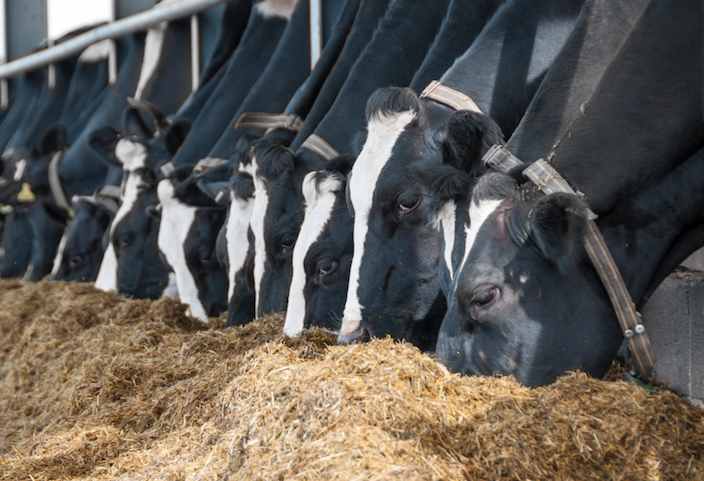First cut silage has potential...
One thing that is promising is that this year’s first cut silage looks good. Analysis conducted by Trouw Nutrition GB on first cut grass silage suggests good quality, with higher nutrient value than 2016 first cut. Specifcally, dry matter is up 2.2% to 33.4%, crude protein is up 0.5% to 15% and ME is up 0.3 to 11.1. Assuming DMI of 10kg/ day, that increase in ME is worth 0.6 litres/cow/day on average 2016 silage.
Rapidy fermentable carbohydrates are high, but slowly fermentable carbohydrates are low, which means that there will be a need to supplement the forage with digestible fibre in the diet for optimal rumen energy/protein balance. Overall, the acid load in first cut is high and the fibre index is low, which means that, whilst there is a real opportunity to maximise milk from forage this winter, consideration needs to be given to rumen function.
Test, test, test...
Gone are the days when it was sufficient to test silage once at the start of the winter feeding period and base all rationing decisions on that analysis for the rest of the winter. Test your silage clamp every 4-6 weeks, as there can be substantial variation in nutrient analysis through the clamp, particularly if different cuts are clamped together. Silage in the clamp is like money in the bank - you would look at your account balance regularly, so do the same with your silage.
Managing the transition to winter diets
Cows that have grazed during the winter need to be gradually adapted to the winter diet over the course of three weeks. For cows that are being buffer fed at grazing this will involve gradually stepping up the winter diet over three weeks as grass supply diminishes on the grazing block. Abrupt changes in diet, particularly with forage, have been shown to put cows off their feed for a period of time and reduce the rumen digestibility of feed, and subsequent milk yield, while the rumen microbial population adjusts to the new diet – this takes three weeks for full adaption.
Balancing and feeding winter diets – maximising dry matter intake
With highly digestible forages in the diet, it should be possible to get forage constituting at least 60% of the diet. This will largely depend on the digestibility and ME content, as ideally the NDF of the overall diet for high yielding herds should be around 32% NDF (although this can be slightly higher for lower yielding herds).
Recent surveys conducted by the University of Wisconsin on 15 of the state’s top dairy herds demonstrated that forage quality, particularly high NDF digestibility, was one of the key factors (along with cow comfort) leading to some of these high genetic merits herds achieving yields of upwards of 18,000 litres per cow.
Key factors to maximise dry matter intake:
• Keep feed in front of cows at all times – minimum six push ups per day (incl. one or two feeding actions with the diet feeder)
Feeder wagon mixing:
• Load in the correct order – usually forages first
• Don’t over fill the feeder – it wont mix properly. This will result in forage and concentrate being unevenly distributed at the feed fence, leading to variable milk yields, as some cows will eat more concentrate than forage
• Don’t over mix the feed – ideally feed needs to be 2-4 inches long (the width of the cow’s muzzle) for good rumination
• The TMR dry matter should be about 45%-48% DM to avoid sorting and maximise DMI. For very dry forages water may need to be added. This is critical to get smaller particles of concentrate to stick to forage and minimise sorting.
Feed space:
Housing:
CowSignals:
Feeding a live yeast to maximise rumen efficiency – maximising fibre digestion and minimising the threat of acidosis…
• Feeding Actisaf Sc 47 improves NDF digestibility, releasing more energy from fibre in forages resulting in more available VFA (energy) for maintenance, production and reproduction. Marden et al, 2008 demonstrated that live yeast is more effective than sodium bicarbonate at rumen buffering after feeding, whilst also improving fibre digestion.
• Actisaf conditions the microbes to ease the transition between diets, particularly relevant during the transition to housing to ensure that milk production is maintained and yield does not suffer.
• Actisaf is the only live yeast scientifically proven to provide a double benefit in the rumen – increasing fibre digestion, but also minimising the build up of lactic acid in the rumen which is the key contributor to the development of acidosis. This has been scientifically proven in peer reviewed research time and time again.

